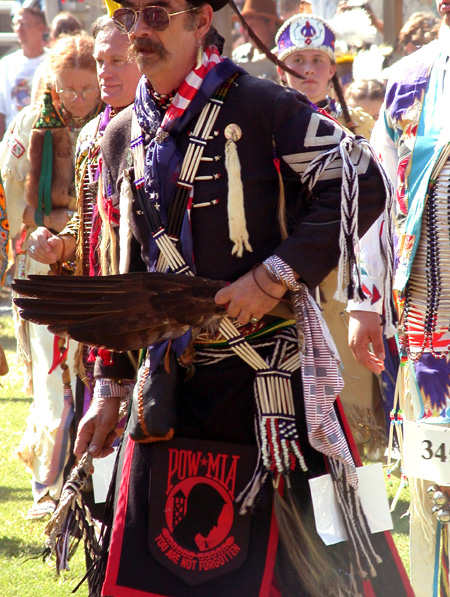Outsourcing, legal visitor worker programs, and immigration – these are issues that will hopefully become part of the political campaigns this year in the US. They should be issues talked about in every country; this world is getting smaller, and we have to start thinking globally. Time to share the wealth. Unfortunately, when it comes to sharing, it tends to be those who can least afford it who are required to give the most.
There was a tragedy in the news today–19 Chinese die collecting cockles (a shellfish) in a dangerous bay in England. Gangs had bussed the workers in, most if not all assumed to be illegal aliens, and then left them to die when the tides cut them off from shore.
Imagine paying someone all that you own to flee to a new country for a better life for your children, a country where you can’t speak the language, and don’t know the customs. Then, once you arrive, you’re coerced into backbreaking work in order to get enough money to feed your family. Rather than the ultimate prize you hope to get – citizenship for your children if not for yourself, safety, enough to eat–you get death.
And now we see that it happens in England, too.
In come the heroes on horses. The conservatives will say, “Let’s legalize the worker’s status so that they can come into the country and do jobs our people won’t do. They’ll have a better life, and our companies will prosper.”
What happens though is that a new underclass of worker is created and formalized; where before people could hope to break out of the status of being an illegal alien into being a citizen, now they’re boxed into that status forever. Yes, it may be safer, and they may live longer – but they’ll be consigned to a dreamless existence as a member of the worker Class. Paid enough to survive but not enough to hope. Living longer, but not living better. That’s what conservatives promise.
But the liberals are not much better when it comes to steedmanship as stewardship.
Protectionism doesn’t work, they say. Let jobs go overseas to help people in other countries. Open our borders. Help create new jobs in other countries. Spread the wealth.
So we create factories in Mexico through NAFTA, to provide jobs for the many people who need it and to funnel needed money into the Mexican infrastructure. And jobs are created, and there is some prosperity. But rather than the equalizing effect that was hoped for by NAFTA, we now have two countries whose people have been tossed from jobs: those in the United States because of jobs going to Mexico; and now those in Mexico, when these same jobs have moved to other countries such as China, because the sudden affluence and competition for workers in certain areas in Mexico have suddenly made them too expensive for corporations seeking a quick buck. What’s left is more colonias, empty factories, and broken promises.
Of course, Mexico’s loss is other countries gain. Countries such as China, Nicaragua, and Indonesia.
But no one has embraced outsourcing more than India. The people of India have prospered with outsourcing, especially in the IT field, and this has pissed some people off. They talk about how sloppy the work is from offshore efforts, but contrary to these disparaging viewpoints, the people from India I have worked with have been intelligent, well trained, capable, dedicated, and with terrific senses of humor. There is nothing wrong with the quality of the work, and, as a confirmed liberal, no, as a member of humanity, I don’t want to deny them work. I don’t want to see their country harmed.
Besides, you have to admire the sheer energy of the Indian people in their determination to not only embrace their new role in world economics, but to expand on it. Indian universities now include computer training for all degrees, and much of the college system has been regeared to this new economy, with a new emphasis on training engineers. Out of the two million graduates this year from colleges, over 200,000 will have engineering degrees.
The “Teching” of India is so pervasive, that it has even impacted on the culture of gender in the country. For instance, rather than more traditional beauty contests, the Miss High Tech Bangalore contest is opened to women in the IT industry, to show that women in IT can be feminine as well as competent. Instead of questions about world peace, the women have to demonstrate IT knowledge. And poise, and beauty, and look good in a bathing suit, that sort of thing. Well, it is a beauty contest.
There’s even a term for the new woman CEO: sheEOs.
And this new embracing role in India won’t stop with just call centers or IT jobs. Business process analysis has moved, as is accounting, some medical analysis, and upcoming biotech work. As Chris Anderson at Wired writes:
Today’s Indian call centers, programming shops, and help desks are just the beginning. Tomorrow it will be financial analysis, research, design, graphics – potentially any job that does not require physical proximity. The American cubicle farm is the new textile mill, just another sunset industry.
Chris thinks this is a good thing, freeing American workers to take on new roles of innovation and enterprise, leaving the debugging work, and spreadsheet calculations to others. Leaving aside the implications to the people in India, in actuality, what is happening in the US is that there is an erosion of the middle class, with a few escaping into the rarified atmosphere of those who make it, the rest slipping down into an ever increasing number of lower paid Wal-mart workers, literally creating and then eating themselves by only making enough money working at Wal-Mart to shop at stores like Wal-Mart.
The conservative heros say, but moving jobs to cheaper places is good because more profits mean more jobs and more taxes in this country, or other Western countries. The liberal heros say, well we’ve had our time in the sun, now its time to share the wealth. And look at how much it improves the situation for women in countries like India? Both groups jump up on their steeds and race away from what they see in an inevitable fact of life, each knowing that they have done good.
Both groups couldn’t be more wrong, because both see the workers having to be the ones to adapt, to pay the price. To share the wealth.
Just as with Mexico, as prosperity increases the costs of outsourcing to India over time, the same jobs that fueled that economy will begin to, have begun to, drift to other countries promising yet more cheap labor. What happens when a country the size of India stakes its future on the outsourcing needs of other countries?
In another article in Wired, this was addressed specifically:
“Someday,” Janish says, “another nation will take business from India.” Perhaps China or the Philippines, which are already competing for IT work.
“When that happens, how will you respond?” I ask.
“I think you must have read Who Moved My Cheese?” Aparna says to my surprise.
Janish gets up from the couch, and to my still greater surprise, pulls a copy from the bookshelf.
Who Moved My Cheese? is, of course, one of the best-selling books of the past decade. It’s a simpleminded – and, yes, cheesy – parable about the inevitability of change. The book (booklet is more like it – the $20 hardcover is roughly the length of this article) is a fable about two mouselike critters, Hem and Haw, who live in a maze and love cheese. After years of finding their cheese in the same place every day, they arrive one morning to discover that it’s gone. Hem, feeling victimized, wants to wait until somebody puts the cheese back. Haw, anxious but realistic, wants to find new cheese. The moral: Be like Haw.
Janish gave Aparna a copy of the book for their wedding anniversary last year. (He inscribed it, “I am one cheese which won’t move.”) She read it on a Hexaware commuter bus one morning and calls it “superb.”
The lesson for Aparna was clear: The good times for Indian IT workers won’t last forever. And when those darker days arrive, “We should just keep moving with the times and not be cocooned in our little world. That’s the way life is.” Or as Haw more chirpily explains to his partner, “Sometimes, Hem, things change and they are never the same. This looks like one of those times. That’s life! Life moves on. And so should we.”
If you’re among the pissed off, such advice – especially coming from talking rodents chasing cheddar around a maze – may sound annoying. But it’s not entirely wrong. So if Hem and Haw make you hurl, return to where Aparna began when I met her that first day – the sacred text of Hinduism, the Bhagavad Gita, whose 700 verses many Indians know by heart.
The Gita opens with two armies facing each other across a field of battle. One of the warriors is Prince Arjuna, who discovers that his charioteer is the Hindu god Krishna. The book relates the dialog between the god and the warrior – about how to survive and, more important, how to live. One stanza seems apt in this moment of fear and discontent. “Your very nature will drive you to fight,” Lord Krishna tells Arjuna. “The only choice is what to fight against.”
How to survive. That is the question of the new century, isn’t it?
According to the National Association of Software and Services Companies (NASSC) in India, this won’t be a problem because by the year 2010, there will be a population shortage in the United States, leading to a shortfall of 5.6 million workers:
The National Association of Software and Services Companies, India’s premier IT lobby, said in a recent report about 1.3 million US jobs will move offshore between 2003 and 2010.
The US, it added, would face a domestic labor shortfall of approximately 5. 6 million workers by 2010 due to slow population growth and an aging population.
“If the labor shortfall is not met, the US economy will lose out on growth opportunities resulting in an estimated cumulative loss of two trillion dollars by 2010. Global sourcing in the form of immigration, temporary workers and offshoring can overcome this shortfall,” it said.
Not only the US – according to the reports the NASSC is putting out, every Western country, from the Italy to New Zealand, will also be suffering labor shortages. The impact will be felt elsewhere, too. China will be undergoing its own labor shortage by the year 2020
This leads me to a recent article that came out in Business Source today. In it, the author, Paran Balakrishnan, talks about how India looks towards the future and its role in the world:
It was a Nasscom executive who put the New World Order in perspective. Yes, he said, in the coming decades India will face competition in fields like software services and business process outsourcing (BPO).
But by 2020 we will be the only country in the world left with enough manpower to meet global needs. ‘We have a sustained competitive advantage to 2020 because of sheer demographics. In terms of working age population India will be the only people-surplus country,’ he said.
…
But consider the fact that by 2020 the even the world-beating Chinese will be facing the unimaginable – a tiny population shortage. That will impair their efforts to compete in fields like high technology where India has a competitive advantage currently.
Other reports support this assessment based on the average retirement age of the existing working force, but with a caveat: human behavior tends to have a habit of screwing of labor projections.
For instance, some tasks will be automated to increase the productivity of workers, as has happened with our own timber industry in this country. Additionally, many of those who have left the job force now due to unemployment can return to it, and many older Americans are choosing to work past the retirement age. Shortages in specific types of work, such as the current ones in education and the health care industry will be met by retraining existing work force members – as is happening now. In other words, people adapt to meet the demand.
And hopefully what happens is that traditionally low paying jobs like teaching and nursing get a much needed and deserved boost in pay scales. That is, unless there’s a source of disposable workers that can be tapped in order to deliberately keep wages down.
This leads to the another option, which Balakrishnan writes about:
For as long as anyone can remember the Government’s slogan has been: Hum do, hamare do (ed: One couple, two kids). Is it time to take a re-look at that slogan? Should we still be campaigning to persuade poorer people in this country to have fewer children?
Or, is it time to look at the entire issue once again in the light of what’s happening in other parts of the world. Once upon a time these might have seemed like futuristic problems for the next century. But now in 2004 we are well and truly into the next century and its problems are racing to catch up with us.
Should we still be campaigning to persuade poorer people in this country to have fewer children?
These are words to chill your soul if you were to hear them spoken in a country like the US, much less the most heavily populated country on Earth. My dear Reader, meet the Disposable Worker Class.
Round and round and round we go and where it stops, nobody knows. This game of musical workers doesn’t end with the workers; it ends with the people playing the music, and pulling out the chairs.
Rather than thinking of a ‘decreasing labor pool’, we should be looking more positively to a decreasing world population with less stress on the resources of a badly overextended planet. Where now a child is a commodity to plug into a factory, or the window of a drive-in McDonald’s, in the future a child should return to being a gift.
Share the wealth. Yeah.
Where employers – from work gangs to major corporations – now shift jobs, or workers, around at the whim of a dollar, they should be the ones made to share the wealth, not to strip it from the skin, and the dignity, of the workers.











